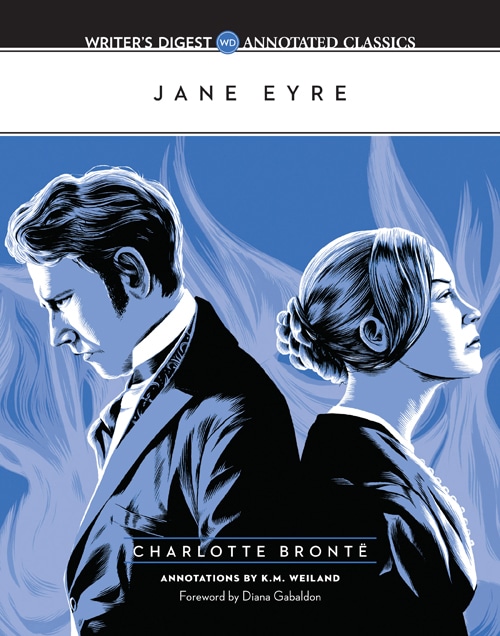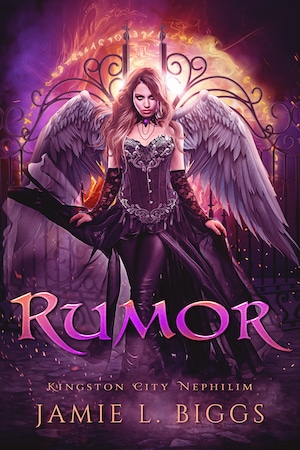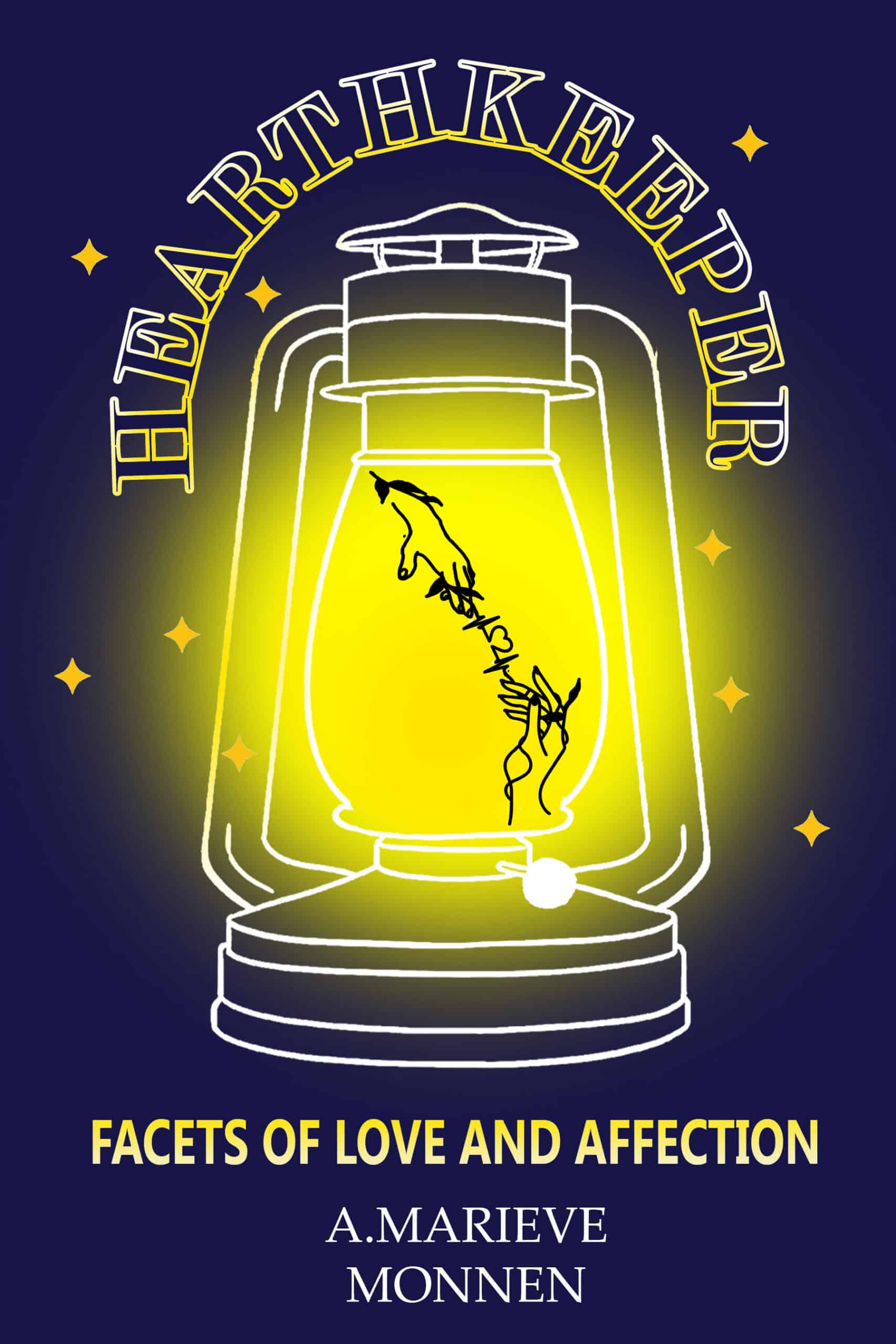What can ol’ fuddy-duddies like Charles Dickens, Jane Austen, and Charlotte Brontë teach us about writing successful modern fiction? Most of us think of the classics and groan over memories of boring high school textbooks. You may even be familiar with Mark Twain’s facetious (and rather ironic, considering his own status as a classic author) definition of a classic as a “book which people praise and don’t read.”

But here’s something else to consider: classics only reach classic status because they are riveting, revolutionary, or just plain entertaining enough to get millions of people, over many centuries, to praise them.
5 Surprising Writing Insights You Can Learn by Reading the Classics
Today,>Remember: It’s Your Protagonist’s Story
Sometimes minor characters can steal our hearts and run away with our stories. But classic authors like Charlotte Brontë knew the story always belongs to the protagonist, not just in the beginning but all the way through.
In Jane Eyre (which I analyze in-depth in my book Jane Eyre: The Writer’s Digest Annotated Classic), Brontë gives us one of the most cherished love stories of all time. With a hero like Edward Rochester galloping across her pages, it might have been tempting for her to have him take over the plot and swoop in to save Jane just when things looked their bleakest.
But before any story is a love story (or a crime story or an adventure story), it’s the protagonist’s story, and Brontë knew this. She never wavered from her focus on her protagonist. Jane doesn’t get rescued. She has to rescue herself. Indeed, she’s really the one who ends up rescuing Rochester in the end!
Have Something to Say
Many entertaining books have been forgotten for the simple reason that they were forgettable. Classics endure because they have something interesting and important to say about the world. Whether we agree with classic authors’ views (in fact, many classics made their initial splash because so many people disagreed with them), we still find these books timeless because of their bold insights and predictions about humanity.
I have to admit: I detested Faulkner while I was reading him (his books were part of my challenge to myself to read all the classics before I die—and his about killed me). His narrative style isn’t for the faint of heart, and I often found his characters morally abhorrent.
And yet—despite my general dislike and even his own obfuscating style—his stories have stuck with me more vividly than just about any other classic author I’ve pursued. If anything, his messages have grown clearer the farther I’ve gotten away from the actual reading experience. The man wasn’t just out to tell fun and fluffy stories. He had something to say, and because of that, people continue to listen.
Create Honest Characters—Main and Minor
Arguably, the single most important trait any character can have is honesty. And by that, we’re talking not just personal integrity, but overall realism. We’re talking characters who are more than one-sided clichés lying there on the page. These folks need to be vivid and true in every respect.
Perhaps no classic author was better at this than Charles Dickens. Every single character in his many works bursts off the page in a frenzy of color and motion. Some might argue his characters are painted so broadly they occasionally verge on the ridiculous (I would argue he intended them to be so). But there’s no denying that the likes of the slimy Uriah Heap—the forlorn street sweeper Jo—the amorous Flora Finching—or the misanthropic Ebenezer Scrooge—have inspired the imaginations of countless readers through the ages.
Every time you introduce a new character, challenge yourself. How can you make this character fulfill every last bit of his potential? How can you defy reader expectations in a way that creates a satisfyingly original character? How can you bring this person to life in a way that is vibrantly realistic? Answer these questions with enough energy and precision, and you will end up with characters every bit as memorable as Dickens’s.
Tell It Like It Is—Even the Dark Parts
Authors who endure are authors who tell it like it is. They don’t soft-soap themes, characters, or life. Sometimes this means sharing joy and hope. But sometimes this also means sharing stories that take a hard look at the darker side of human nature. Not many of us read tragedies for sheer pleasure, but it’s no mistake that many of the most enduring stories in history are those that offer an astringent bite of reality.
Emily Brontë’s bizarre and beautiful Wuthering Heights is such a book. Acclaimed by many as one of the greatest stories ever written, this book was its author’s only contribution to literature before her death at the age of thirty. Upon its publication in 1847, it drew attention largely due to the scandal it created. Its themes of passion, vengeance, cruelty, and violence are startling even now.
Wuthering Heights works, not because it is shocking, but because it is authentic. Brontë wasn’t going for shock value. She was just telling her story as it needed to be told. She might have been tempted to tone down her often unlikable characters in order to make them more sympathetic to readers. But she never compromised. And that one secret, by itself, made her immortal.
Sparkle Your Wit
Finally, what discussion of the lessons to be learned from classic literature would be complete with at least one Austenian reference? Readers want reality. They want honesty. They want powerful themes and equally powerful characters to carry those themes. But what fun is all that stuff without a dazzling presentation?
Wit is always fashionable—whether it’s humorous, ironic, good-natured, or sarcastic. Readers thrill to stories that are not just good tales but well-told tales. And no one was better at bringing her stories to life with a sparkling dose of wit than was Jane Austen.
Hone both your authorial voice and your character’s individual voices. Language is your one and only tool for bringing your ideas to life. Even the best of imaginations will languish in solitude without the ability to properly transport images and ideas into the minds of readers.
Every book you read offers important lessons on honing your craft. Even the not-so-good books will provide opportunities to learn how not to do it. But nowhere will we find better examples of how to create enduring fiction than in the stalwart legacies of the authors who have gone before us and survived to tell their tales decades after their own deaths.
What about you? What are some of your favorite classics, and what have they taught you about writing?
PRACTICE
Choose a classic novel and spend some time reading a few chapters. Make a list of everything you can learn from the author’s presentation. When you’re finished, spend at least fifteen minutes writing a scene that incorporates two or more of those lessons. Then, post your practice in the comments section!
This guest post is by K.M. Weiland. Weiland lives in make-believe worlds, talks to imaginary friends, and survives primarily on chocolate truffles and espresso. She is the IPPY and NIEA Award-winning and internationally published author of the Amazon bestsellers Outlining Your Novel and Structuring Your Novel. She writes historical and speculative fiction from her home in western Nebraska and mentors authors on her award-winning website Helping Writers Become Authors.



Thanks so much for having me today, Joe!
WOW, K.M. I’m seeing you EVERYWHERE today, K.M. All your posts have been terrific. I really like showing the darker sides of my character because NOBODY is perfect. Plus, it makes them more interesting. Thanks for all the great info.
Thanks, Marcy! And I agree: a character’s imperfections are always going to be his most interesting aspects.
You’re very talented, K.M. and I appreciate all that you’ve shared today.
I’m so glad you’ve enjoyed the posts!
Well I am currently reading For Whom the Bell Tolls. I like to read classics and hope to also read a lot of them in my life. The book so far is serious and Hemingway for me has made the characters real, the characters suffer and are passionate in their beliefs. The language feels real. It has a Spanish sound to it even though it is in English. Another point about Ernest Hemingway’s novel is that the characters Pablo and Robert to me are interesting and I want to know about them and to continue on and see what they are doing.
I’m working my way through Hemingway right now, and For Whom the Bell Tolls is easily my favorite so far. Spectacular.
K.M. Weiland, thanks for this great post and reminder to read classics. I recently read your book “Structuring Your Novel.” It has been a great help while writing my first novel. Your website is also super-helpful. Thank you so much! 🙂
I’m so glad you enjoyed the book – and the site! Makes my day to hear they were useful.
The frog hopped frantically in the large coffee tin. I reached in and stroked his back, trying to calm him down. They always freaked out at first, scrambling to escape. I wouldn’t hurt a frog; they were my favorite animal. I searched water meters in my neighborhoods for hours, braving hundred degree summer heat, for them. The times I noticed one hopping around, I squealed, dropped to my knees , and pulled it out. I always hugged them to my chest before dropping them into a plastic bucket.
“Let me see it,” my new friend, Billy Joe, said.
I was a little disappointed at having to share, but took a step back. About to start middle school, I needed a human friend more than an amphibian.
Billy Joe stuck his hand in the can and poked at the frog.
“That’s not how you do it,” I said. Acting like the world’s eminent frog biologist, I tried showing him how to pet the frog gently. He pulled away from me. I inched into his space and continued stroking the frog. It sat as if hypnotized. I smiled and nodded.
Billy Joe pushed me aside with a hand. I toppled over.
“Hey!” I said, laughing. He touched me! When guys wrestled, it was cool.
“Watch this,” he replied.
I pulled myself up onto my knees and watched as he squirted clear liquid in the can, covering the frog.
“Yeah, he’s probably hot,” I said, disappointed in myself that I hadn’t thought to give the frog water.
“Just wait,” he said. I noticed a funny smell, like when Dad filled up at the gas station.
Billy Joe disappeared into the house. I scooted to the can. The smell was stronger. What was that? I reached in and touched the frog. He felt greasy. I looked back at the house, tempted to grab the frog and run. Something held me in place. Billy Joe was the first kid who’d invited me over in years.
Billy Joe reemerged, carrying something. He covered it with his hand so I couldn’t see. He sat down with his back to me and I heard a small scratching noise.
He turned back to me with a lit match and threw it in the can.
The frog screamed. He freaking screaming. He flopped around the can as flames grew on his back and spread to his legs.
I started crying and positioned my hands over the cage, like I could find an opportune time to grab the frog. Like the flames might recede enough for me to grab him.
My hands never moved as the frog’s screams grew quieter and eventually disappeared. Through a haze of confusing and pain, I heard laughter.
“That was awesome!” squealed Billy Joe. “Did you hear that?”
I sat back on my haunches and nodded a tiny nod.
Nice! What classic inspired you?
Whoa that is good writing, and the scenario felt real. You sucked me in, and I am still shaking. I feel like I actually saw and heard the whole thing. I read it 10-15 minutes ago. I connected with your protagonist too. I’m worried about him now. Very good writing, effective.
Ernesto sat at the edge of the sun-drenched pier, fish pole in hand, patiently waiting for any fish to bite. He kept looking out at the vast expanse of open sea. In the distance, floating lazily under the blazing tropical sun, were the village’s fishing boats. Their image taunted him, and he thought to himself—when will I be able to board one of them? His reverie was broken by heavy footsteps approaching in his direction.
“Caught anything yet, Nesto?”
He turned to look up and saw the overshadowing figure of his grandfather—old, gray and weather-beaten.
“No, abuelo. It doesn’t seem they’re biting today, and I’ve been here since early this morning.”
“I think the fishermen in those boats,” his grandfather pointed with an arthritic finger, “have monopolized your fishing venture today.”
“Ay, abuelo, why can’t you and me go fishing in those boats? I’m a good fisherman,” he said, standing. “I know it ’cause you taught me.”
“You’re too young, and I’m too old, Nesto. Besides, you’ll be able to do that in due time and maybe then, you’ll learn to battle the forces of nature as I once did, with one difference—this time, you must come out the victor.
I really like the dialogue.
Thank you, Sandra.
Great! Any Ernest Hemingway inspiration here?
That would be a resonating yes. The Old Man and the Sea—one of my all time favorite Hemingway classics, so it was an easy deduction for anyone familiar with this work. Thanks for your comment, Katie.
I just read that one here recently.
Please find a new website for all your article writing needs.
Visit now :
http://www.getuarticles.com
Articles as low as $1.50
getuarticles • 2 minutes ago
Please find a new website for all your article writing needs.
Visit now :
http://www.getuarticles.com
Articles as low as $1.50
The strength of the wind blew corn stubble across the field of 100 yards
causing the cloth to move enough that there was a flash of the white cotton
lining material on one side of the cloth even though it was a warm, sunny day,
with clear blue sky. The noise of the wind contrasted the elements giving a
sense that the temperature was cooler than it felt and it was a day that one would
need a light jacket to maintain warmth.
( Cormac McCarthy – little punctation and a lot of detail)
Definitely has that McCarthy feel!
Ooh, I like this! I read and write a lot of YA with short, clipped sentences, so this sentence structure is refreshing. The lack of punctuation feels so scandalous! But it really works and has a really clear, interesting voice. Fascinating choice!
Thank you, Ms. Weiland, for this insightful advice. I will strive to keep it in mind while writing. To maintain some sense and sensibility about these elements of dramatic storytelling is our utmost priority.
Jane Austen would approve. 😉
Thanks so much for this insight and the challenge. Unfortunately, while I’m well-educated and come from a family of voracious readers, I’ve spent the majority of my reading time on academic (non-fiction) works. I’ve read some classics, but it’s been a long time. I so admire people who exude enthusiasm for literature. I will keep your inspiration in mind as I work towards carving out more time for diverse reading and honing my ability to notice and draw lessons from “the masters” and all authors. I just jumped over to your website, and look forward to exploring and learning from you there.
Thanks, Susan! I’m excited that you’ve been inspired to pursue the classics. It’s definitely been a rewarding journey for me.
Thanks. Really interesting. 🙂
Thanks for reading!